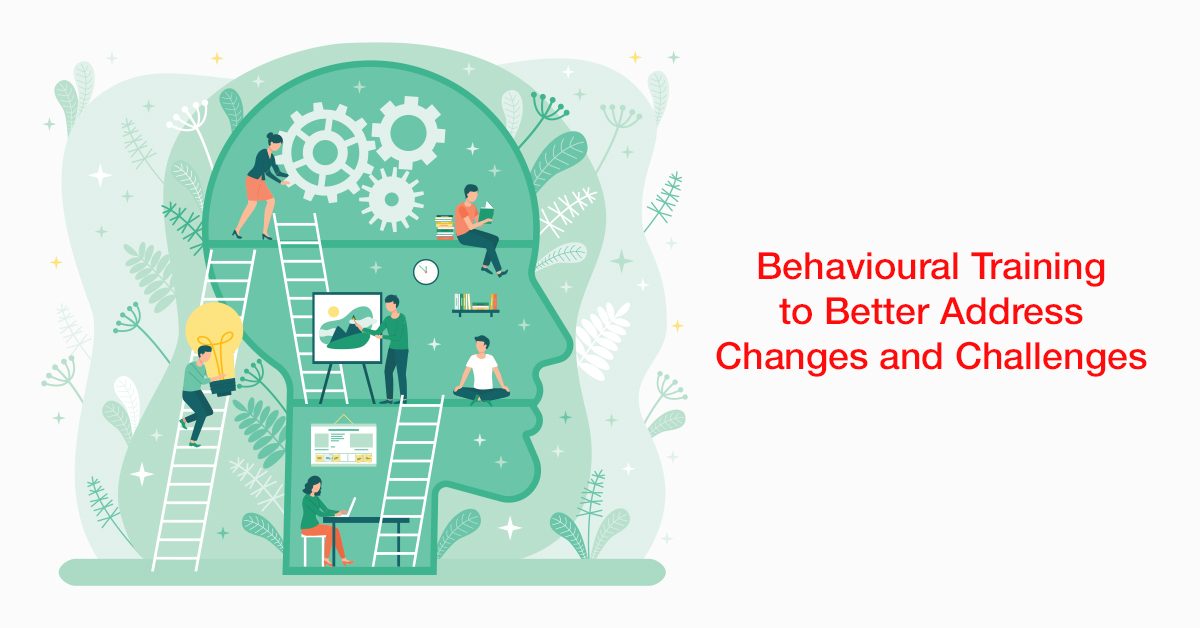
5 blended learning challenges and their solution:
-
Challenges of implementing blended learning
-
Solutions to these blended learning implementation challenges
-
Our services in the field of custom eLearning development and blended collateral creation
A blended learning strategy can give your learners the feeling of personalized learning. Which is common among learners in a classroom training setting. It also allows for some student control over the pace of the training. Like that what is possible in an online training course.
Here’s a link to one of our earlier articles which talks about – How You Can Plan for an Effective Blended Learning Experience and How Blended Learning is Great for Sales Training.
Once you start seeing the benefits of blended learning, it is best to understand the challenges of implementing it and the possible solutions.
Like any thing you do, blended learning has its own set of challenges. However, do not be phased by the challenges. Rather identify these challenges in advance and work towards finding a solution for each.
We have listed some challenges that you may be facing right now. Or you potentially could when you begin to implement blended learning at your workplace. These challenges are broader but are some of the more commonly occurring problems.
Setting Deadlines
Face-to-face training is very clear in its objectives. There are start and end dates associated with such training programs. However, an online course usually does not have a deadline or complete-by date associated to it.
Online training carries an element of ‘student’s control over the pace of training’. Which means students can take any amount of time they need to complete the course.
Additionally, the self-paced training is all about giving students control over time. And when you combine online training and classroom training, you’ll soon have learners with varying learning paces together and these learners have the choice of learning at their own pace. So, you can actually face a situation where some learners are far behind the rest of the class as they self-pace their learning.
The Solution:
There is only one straight solution to this. And that is to set a definite deadline for students to complete their training. However, do not set deadlines for the entire course. Rather, set deadlines for learners to complete each module present within the training program.
By setting deadlines for each module vs setting a deadline for the entire course, the trainer can give personal attention to learners who are falling behind at completing a module. This is a good method to keep all your learners on track and not let anybody fall too far behind.
Resistance to Technology or Online Learning
Another challenge that blended learning practitioners face are resistance to technology-based learning and/or resistance to learning online. The delivery methods for blended learning requires the implementation and use of technology.
And many times, resistance to blended learning comes from learners who do not wish to either invest in technology needed to support blended learning like high-speed internet and a PC or a laptop. Or, learners who think that the software on which blended learning takes place like say a web-conference tool or the learning management system is too complex for them to understand.
The Solution:
The easiest way to appease learners is by organizing some form of formal orientation. Introducing learners to the learning management system or the video conferencing tool can ease your learner’s anxious nerves. A great way to do this is through a quick explainer video that makes it fun and seem less intimidating. You could also consider sharing the contact details of people whose role is to provide tech support to learners.
Additionally, blended learning is a combination of online learning and a traditional classroom. It basically means that learners do not need to be afraid of the online aspect of the training. As learners also have the option of interacting with the trainers personally in a face-to-face setting.
Motivating Learners to Complete
eLearning is notorious for its reputation about learners losing the motivation to complete their course midway.
The lack of motivation also stems from the belief that blended learning is not as effective as traditional classroom training. And so, it really does not matter if one completes the course or chooses to drop out midway. Plus, a lot of learners have experienced boring and unengaging training without proper design, structure, and level of interactivity.
Another factor that adds to the drop in motivation is when there are no deadlines associated with completing the course as discussed in the first point.
Because eLearning and blended learning are perceived by some learners to be a relaxed way to learn. It so happens those other engagements like meeting friends, working, and other obligations almost always take precedence over blended learning in the minds of some learners.
The Solution:
You have to be very clear and precise with your communication. eLearning and blended learning may appear very easy at the onset. But the challenge of motivating and self-driving towards completion starts once the learner has enrolled. And all other obligations appear more important over completing the training itself.
If you go through this university’s approach at reaching out to learners and communicating with them, it is noticeable that the university has taken the efforts to outline and suggest a solid framework for learners to follow. And this is something that every organization looking to dive into blended learning can benefit from.
A more direct approach to this challenge is to increase the level of interactivity within the eLearning course. If done right, interactivity can increase engagement rates and motivate learners to return to a course they have started and attempt to complete it. In order to get the right type and form of interactivity embedded into your course, you may need to partner with an experienced vendor who know how interactivity within a course works.
The Challenge of Delivery
Now resistance is not just limited to learners. Sometimes, trainers can put up a wall as well. The reasons for doing so are many. However, the leading reasons are with regard to a technology block the associated learning curve, and the additional efforts needed to conduct blended learning.
There is no hiding the fact that the trainer is one who needs to understand and use technology to its fullest. And it is the trainer who needs to put in additional efforts required to plan and conduct the training. This can often be the case wherein the trainer believes that conducting a pure face-to-face training session is much simpler and better than blending it.
The Solution:
Well, the likeliness of encountering a trainer who puts up a block is minimal. However, the possibilities of encountering a trainer who is not comfortable with technology and the extra efforts is possible.
But as discussed, it is very simple to train the trainer about the benefits of using technology. Like always, effective communication and some form of orientation with regards to the technology can work very well here.
Obviously, a more direct solution also exists. And that is looking for a trainer who is well versed with blended learning and is ready to put in the extra efforts needed for the program to succeed.
Additionally, an LMS that is easy to operate and setup is a good option. A platform with multiple integrations to video conferencing tools, easy upload of training content, addition and removal of learners, automated reporting, simple and straightforward UI and UX, and manageable on both mobile and PC. A simpler platform eases trainers into using the platform more often. Till they reach a level of comfort with the tool.
Staying Consistent
The final challenge to implementing the blended learning model is with regards to consistency. As discussed, blended learning takes extra efforts to implement and execute. It can also prove challenging to both the learner and the trainer from a technology standpoint. And demotivation for both the trainer and learner can quickly set in. If say the enrolment rates are too low or if the learner just does not see the importance of training.
The Solution:
Consistent approach to blended learning is very important. It cannot be pursued as a one-time activity unless it truly is. If your agenda is to create a culture of learning and development with increased participation from learners, then you need to stay dedicated to the process and look for ways to improve with every session.
Who Are We?
We are eNyota Learning, an organization with 15+ years of experience in the field of custom eLearning development. Our mission is to help organizations of all sizes see the benefits of training and development and to use eLearning or digital training as a means to achieve their training goals.
We have assisted many organizations with building the perfect asset library needed to conduct blended learning where students learn at their own time, place, and path, and a trainer looks over the complete operations. We can assist your organization with world-class blended learning solutions as well. If this is something that interests you, reach out to us at contact@enyotalearning.com or click on this form and we will get in touch with your shortly.




